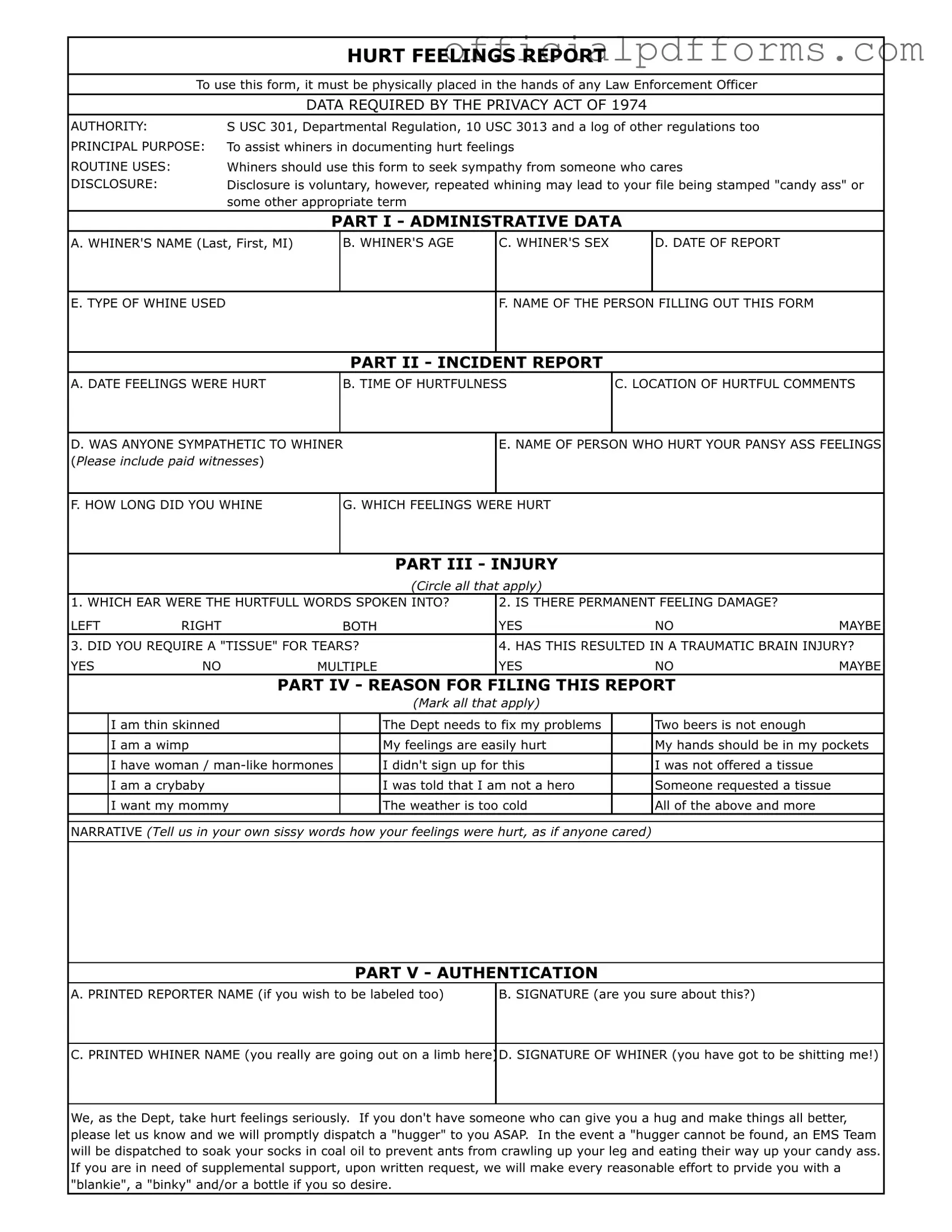The Hurt Feelings Report form is designed to assist individuals in documenting their emotional distress. It provides a structured way for those who feel wronged to express their grievances and seek sympathy from others. While the form may seem lighthearted, it serves as a tool for individuals to articulate their feelings and experiences.
Anyone who feels that their feelings have been hurt can fill out the Hurt Feelings Report form. The form requires personal information, such as the whiner's name, age, and the details of the incident that caused the hurt feelings. It's important to note that the report must be physically handed to a law enforcement officer to be considered valid.
The form consists of several sections that gather comprehensive information about the incident. Key data includes:
-
Whiner's name and age
-
Details of the incident, including date, time, and location
-
The name of the person who allegedly caused the hurt feelings
-
A narrative section for the whiner to describe how their feelings were hurt
Each section aims to provide a clear picture of the emotional distress experienced.
Once the form is submitted to a law enforcement officer, it will be reviewed. The department takes hurt feelings seriously, and they may offer support. This could include sending a "hugger" to provide comfort or, in more extreme cases, dispatching an EMS team. The goal is to ensure that individuals feel supported and heard.
Yes, the department is committed to providing follow-up support. Upon request, individuals can receive additional comfort items, such as a "blankie" or a "binky." The intent is to create a supportive environment where individuals can feel safe expressing their emotions. The department encourages anyone in need of further assistance to reach out.
